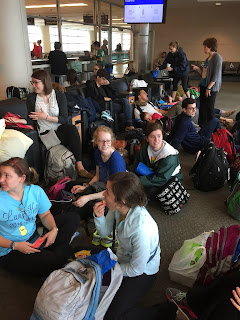Midweek, we found ourselves in the national capital city of Canberra, in the Australian Capital District (ACT). It’s not exactly halfway between Melbourne and Sydney, but it did serve to break up the incredible distance between the two cities.
Canberra came about as a result of a compromise: at the dawn of the twentieth century, two cities existed that could rightly claim fame to being the seat of the government. Both had unique stores of wealth. Melbourne, which benefitted from being close by the gold rush that took place in Ballarat, and Sydney, with its incredible harbor, shipping and commerce possibilities. And Australia was ready for the next phase in her trajectory of growth.
So it was decided to pick a point between the two goliaths, and Canberra was the choice.
It bears striking similarities to our own national capitol of Washington, DC: a long promenade sweeping up to a war memorial; a planned city, built around the concept of creating a seat of government; a body of water close by. Whereas DC has the Potomac River, Canberra created a man-made lake, Lake Burley Griffin. But that lake still has the idyllic effect on this place of civic endeavor.
By far, the most significant part of our day was a visit to Australia’s War Memorial. Beautifully laid out, interactive, historically compelling, it chronicled the sacrifices of the young nation, initially in the Great War and the horrors of Gallipoli, and then, a generation later, in the Second World War.
I’ve been to a lot of museums and memorials in America – but I can say that this tribute ranks among the finest ever visited. I could’ve spent two days there.
And it’s interesting how just one piece of music can capture the imagination of the terror, slaughter, and sadness of war. I was standing at the end of the WWI exhibit, have traveled through time to witness the world coming to grips with just how effectively they could destroy each other. In the final room, there was a very short video presentation: a montage of young men heading out to battle, sitting in a transport vehicle. They were bright eyed, full of vigor, confident, jovial. Then a soundtrack came on – a lone folk singer, beautifully intoning the lyrics to “Waltzing Matilda.”
It was as if you could capture the history of the nation in those sixteen bars of music: knowing that most of those faces would never return to their homeland, fearing what they would see when they encountered the hell that is war. It was the song that contained the truth and tragedy of their journey.
Tonight, we sing at Saint Christopher’s Cathedral in Canberra, hosted by their archbishop. It will also be a chance to visit yet another of ACU’s campuses, to visit with their Campus Ministry staff, and to share some of our repertoire.



















